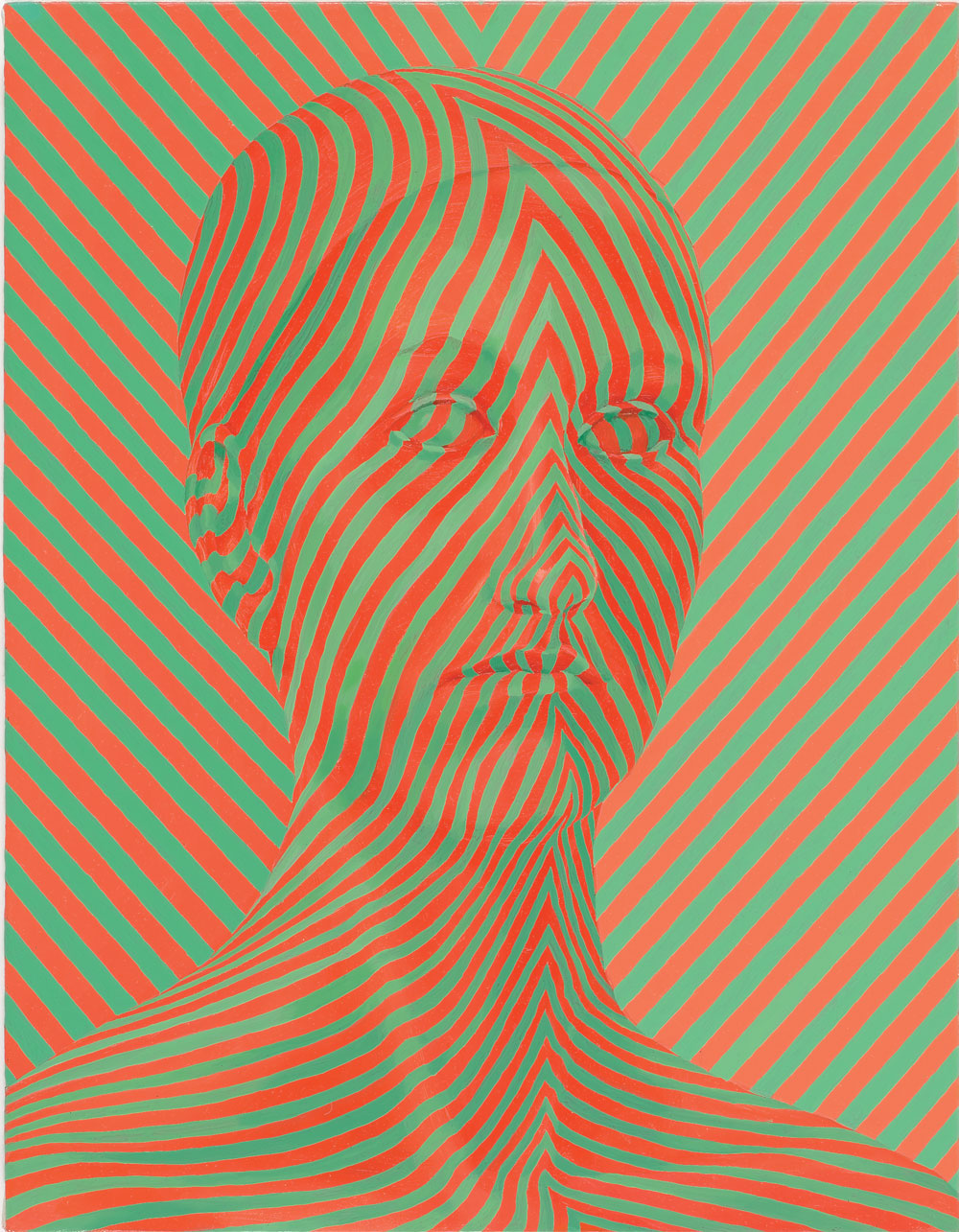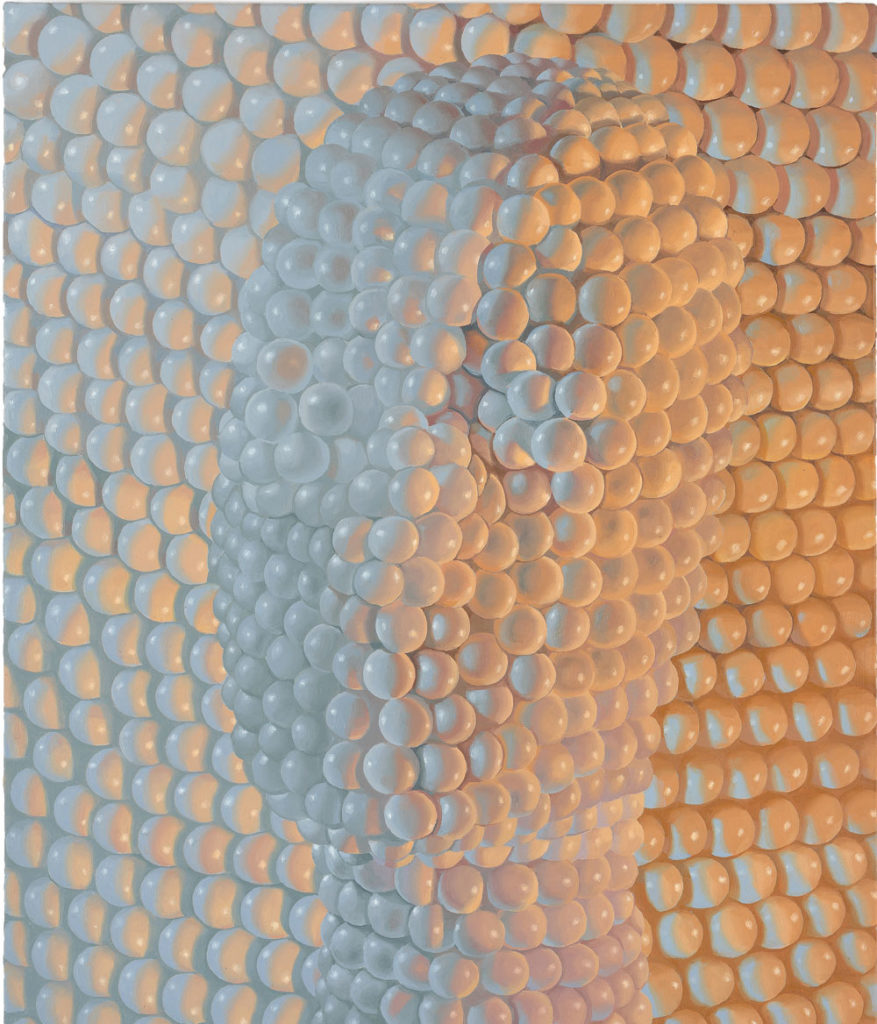“I’ve never been an artist who responds to landscape in my work,” the painter Sascha Braunig told me as we sat inside, sheltered from a late spring rainstorm. Born in Qualicum Beach, British Columbia, and currently based in Portland, Maine, Braunig was visiting New York for Frieze Art Fair.
She was staying at a friend’s apartment in the West Village, and we spoke during her afternoon off. “I think my work is very interior. It’s about a mental space, not necessarily an outdoor literal space.”
Braunig’s preferred literal title is, and has primarily been, a painter. She lived in Canada until leaving to receive her BFA at Cooper Union, followed by an MFA at Yale, and now returns to Vancouver Island twice a year to visit her parents.
Like her work, Braunig’s identity resists the limits of topography—not about where she’s from, but what version of the world she wants to represent. The heightened contrasts, saturated palettes and voluminous dimensions of the figures in her paintings give the impression of sheen, as though they could, or will, reflect light.
 Sascha Braunig, Chevron, 2012. Oil on canvas over panel, 45.7 x 35.5 cm. Courtesy Foxy Production, New York.
Sascha Braunig, Chevron, 2012. Oil on canvas over panel, 45.7 x 35.5 cm. Courtesy Foxy Production, New York.
The effect is both disorienting and transfixing. Like hypnosis, her swirls make me want to submit. Braunig prefers the synthetic, speaking of “plastics, nylons, artificial lights, colour gels, metal.”
A recent work, Rebecca (2015), is an oil on linen over panel, depicting a coppery wire figure (a mannequin, maybe?) wearing an off-white sheath dress, a sweetheart neckline giving the appearance of a female body, and small silver pins that look like they’re holding the material in place; we’re looking a fitting in process.
In the same year, Braunig produced Warm Leatherette, another silhouette resembling a female form, covered in a shiny, chartreuse, quilted material; it’s unclear if the form has been consumed by the padded fabric, or if she’s become it.“The surface ornamentation is about protecting the interior of a subject from its environment,” Braunig tells me. “That’s something fashion does. I’m interested in how that fails as well, and how our surfaces are porous to their environment—the environment is impinging on the interior, maybe almost infecting it.”
Braunig has always been interested in glamour, referencing commercial photography and the Flemish painters of the Northern Renaissance, like Jan van Eyck—“the gleams and shimmers that make up a representation,” an allure that deflects rather than decorates. Her paintings reference the real, even if they don’t resemble it; they’re reminders of an emotional sense more than a tactile sensation.
Recently, she’s been thinking of nylons or other stocking-like textiles, working with a “warm, fleshy palette.” Even her ideas of flesh don’t look like they come from the natural world, which Braunig says could be the reason her work is often described as uncanny. That description fits her like the kind of hyperrealistic glove she might paint a hand wearing, or becoming: “I think,” she says, “this world is totally artificial.”
This spotlight article, adapted from the cover story of the Fall 2016 issue of Canadian Art, has been generously supported by the RBC Emerging Artists Project.

 Sascha Braunig, Saccades, 2014. Oil on linen over panel, 44.4 x 38.1 cm. Courtesy Foxy Production, New York.
Sascha Braunig, Saccades, 2014. Oil on linen over panel, 44.4 x 38.1 cm. Courtesy Foxy Production, New York.







